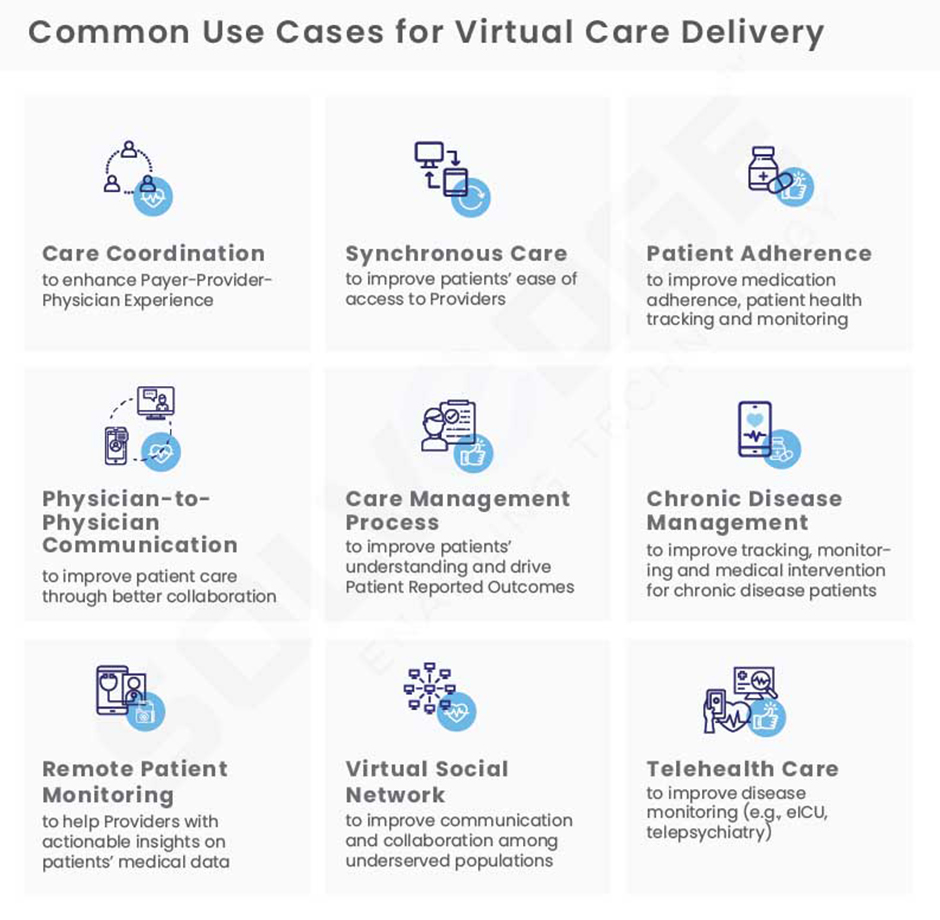How to Gain Physician Trust
How to Gain Physician Trust in Telemedicine Solutions and Digital Healthcare

Blog
How to Gain Physician Trust in Telemedicine Solutions and Digital Healthcare

Given the evolving need to adapt to the digital healthcare landscape, it’s time that healthcare leaders understand the significance of looking beyond EHRs and integrate dedicated Remote Patient Monitoring solutions (RPM)
The global health emergency has spurred the adoption of telemedicine solutions around the globe. Research indicates that about 36% of the U.S healthcare consumers have now switched to telemedicine platforms for doctor visits.
This paradigm shift has created a world of opportunity for the healthcare ecosystem to transform their care delivery models, while helping Physicians with actionable insights—to remotely track and monitor patients’ health for any medical interventions. However, not all health systems are equipped with resources and strategies for this change—leaving huge untapped opportunities on the table.

Given the evolving need to adapt to the digital healthcare landscape, it’s time that healthcare leaders understand the significance of looking beyond EHRs and integrate dedicated Remote Patient Monitoring solutions (RPM)—to unleash the full potential of coordinated care, and to improve health outcomes at scale. They must also leverage the capabilities of the existing tools to work towards achieving holistic digital enterprise transformation. Here are the top considerations that capture the essence of comprehensive patient engagement solutions.
In today’s digital era, the market is swamped with a host of wearables and IoT-powered devices. However, the Centers for Medicare & Medicaid Services (CMS) reimbursement plans do not support all the devices. It is mandatory that the device is approved by the U.S Food and Drug Administration (FDA). FDA approval of a device goes through stringent processes and clinical trials to ensure that the devices are safe for Telemedicine Solutions and Remote Patient Monitoring Platforms.
Implementing an RPM or Telehealth solution involves all the key stakeholders from multiple specialties. It is critical that the roadmap is clearly defined to meet the requirements and standards of all the specialties involved. When developing strategies for specialty services, the healthcare leaders must consider components including the capabilities of operating remotely, budget and ROI, among various other factors.
Different specialties have different use cases for Remote Patient Monitoring and telemedicine platforms, and to design an ideal solution, they need to be carefully evaluated. For instance, cardiology requires digital devices to track the blood pressure, heart rate, weight, whereas dermatology specialty may just require a high-resolution camera for better visual analysis of an issue.
Physicians tend to have a busy work schedule that includes outpatient & inpatient rounds, and emergency visits. When a Physician accommodates a tele-visit between these schedules, it is best if the patient records are well-integrated with essential patient health information from referral Physicians, Patient Reported Outcomes, and other critical data—that will give a complete and single view of the patient’s vitals.
For frictionless communication in telemedicine services, IoT-powered devices and wearables are integrated with the EHR to provide a 360-degree view of the patient health information. This critical data is delivered to the care providers via a mobile application. However, the market is flooded with devices and formats through which data are exchanged—and this may involve several risk factors in terms of the quality and privacy of critical patient data. That’s why FHIR sets certain standards for data collection, integration and exchange. These regulations help in seamless and secure data exchange to support holistic patient care, while driving the overall health outcomes.
Improving Telemedicine Reimbursements: The Ultimate Guide
Telemedicine Etiquette Checklist: 10 Tips to get started with Telehealth Services
CMS Proposes to Permanently Expand Telehealth Service Benefits
Achieving True Success in Healthcare Interoperability
Five Reasons Why a Video Conference Platform Does Not Equal a Telemedicine Platform
To learn more on accelerating the capabilities of telemedicine solutions to transform patient engagement, talk to our team.
From our humble beginnings as a healthcare start-up—to becoming a full-blown healthcare-exclusive digital transformation provider, our journey has been quite a remarkable one. Today, SolvEdge is a leading-edge Healthcare services and solutions provider—trusted by 450+ Hospitals, 3500+ Physicians and millions of patients across the globe.